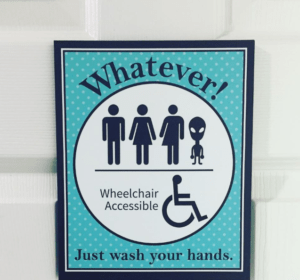Trans rights have been in the news a lot lately. During his eventful tenure, President Trump has eroded existing protections for transgender individuals in the United States. This winter he removed protections for transgender students in public schools that allowed them to use the bathroom of their gender expression, and not their physical sex. At the end of July, he announced, via Twitter, that transgender individuals would not be permitted in the US military in any capacity.
Rights for Transgender People in Canada

While such protections have been reversing south of the border, protections and recognition of trans-rights in Canada continue to increase. In June 2017, the federal government passed Bill C-16, which added “gender identity or expression” to the Canadian Human Rights Act, and to the hate crimes and sentencing provisions of the Criminal Code. Notably, every province and territory already had these protections in their respective Human Rights legislation, so this move by the feds closes the loop. Indeed, the pioneering Northwest Territories has had gender expression protections in place since 2002!
Comments in opposition to the Bill included concerns over being penalized criminally for misusing gender neutral pronouns – this is not illegal – and that the Bill would allow those with male genitalia access to female only spaces, possibly endangering women. This concern has never been supported by evidence, and if anything transgender people face the greatest risk of violence and harassment in sex-segregated spaces.
Supporting Transgender Employees
Canadian employers are expected to making workplaces safe for trans-people. Areas to consider include:
- Ensuring the availability of a safe and comfortable washroom;
- Removing barriers with respect to employer forms or IDs that collect information on sex, and have only gender binary options (M or F);
- Reviewing content of background checks to ensure they do not “out” employees who have undergone a gender transition;
- Reviewing uniforms or dress codes policies, although by now, employers are hopefully aware that any sex-based difference in dress code must be legitimately linked to the requirements of the job. If this cannot be shown (it’s unlikely it can), then the dress code is discriminatory anyway.
In all circumstances employers need to be sensitive to their employees safety, and take care to not discriminate against employees who identify as non-binary.
Transgender Policies
The Ontario Public Service set a good example in 2016 when it instituted a new Gender Identity Policy. This policy limited circumstances in which biological “sex” information could be collected, and instead asks employees about their “gender identity” when necessary. Three options are given with respect to gender identity for display on employee IDs M, F and X for those employees who are trans, identify as non-binary or simply prefer not to say.
Employers should take a look at their policies and practices to ensure that they are not unwittingly discriminating against current or potential employees. If you need help understanding your obligations, or overhauling your practices, we would be pleased to assist.


